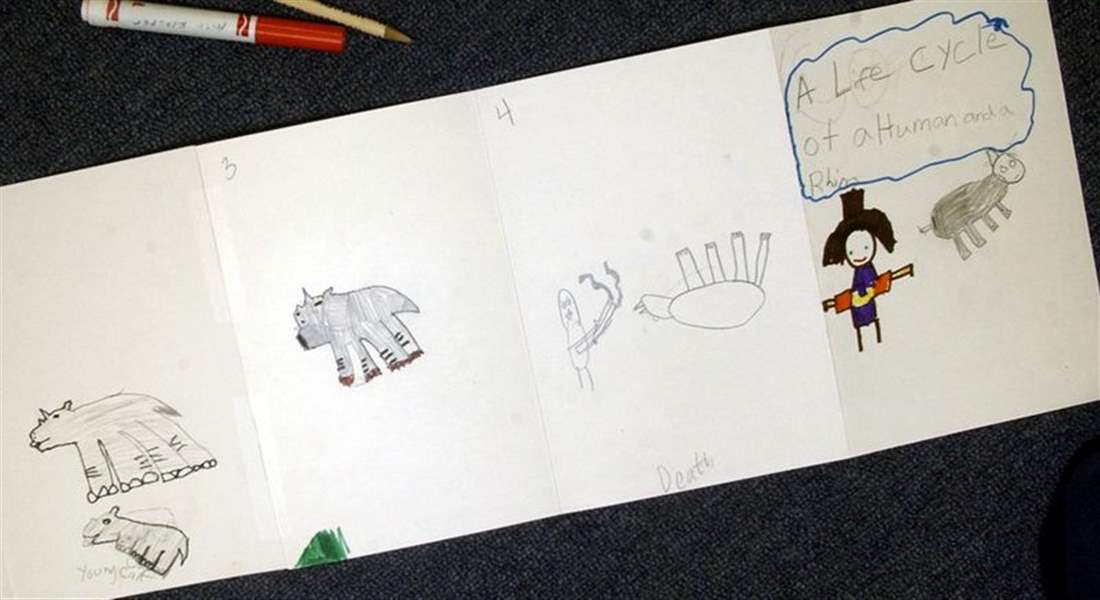
Perrysburg: Zoo teaches via long-range safari
4/27/2005
Third graders in Joe Sarnes class gave their impressions of a black rhino's life stages compared to humans.
Hires / Blade

From left, Shannon Rosenlieb, Andrea Wertz, Tyler Harrington, and Andrew Smith, all 9.
Third graders at Fort Meigs Elementary School in Perrysburg went on a high-tech safari last week, getting close looks at the horns and skin of Africa's black rhinoceros and even watching a rhino giving birth.
The students' guide was Cathy Ryan, an education specialist at the Cleveland Metroparks Zoo. She led a long-distance learning lesson using technology that broadcast her image into the Fort Meigs classroom and allowed her to speak with students during the session through microphones.
"It was really cool and really interesting," said third grader Tyler Way, who responded to one of Ms. Ryan's questions by identifying the rhino as a mammal.
The rhinoceros lesson was the first of three sessions in the zoo's pilot long-distance learning program about Africa. The Fort Meigs class will take part in two other sessions in May, which will focus on animal care and veterinary medicine for African animals.
The Cleveland Metroparks Zoo contacted schools around the state about the free program. Joe Sarnes, third grade teacher at Fort Meigs, said he jumped at the chance to participate when he heard about the pilot program from district administrators.

Third graders in Joe Sarnes class gave their impressions of a black rhino's life stages compared to humans.
"I love technology, and I do a lot with technology with the kids," he said. "To me, it's a great way of bringing in experts. It can be hard to get speakers to actually come the classroom."
On the classroom's movie screen, Ms. Ryan lectured about the five types of rhino species
and the reasons they are endangered, focusing on the black rhino. Using computer cameras, she showed the students close views of a piece of inch-thick rhino skin and a rhino horn, which is made from the same material as fingernails and hair.
The lesson included video footage of the birth of a black rhino at the Cleveland Metroparks Zoo in 2001. Students greeted the video with cries of "Ewww!" but they were captivated as they watched the 90-pound baby learn to walk.
As part of the program, the zoo explains to teachers how each lesson fits in with the state-mandated curriculum.
"We talked about animals, life cycles, and conservation. Those are all things in the state standards," Mr. Sarnes said.
The zoo also recommends classroom activities that relate to the long-distance learning lessons. Before the rhino lecture, Mr. Sarnes had his class design slides about an endangered species, and after the lesson, he guided them in making drawings comparing the life cycles of humans and rhinos.
Third grader Maddie Burke said she is looking forward to more long-distance learning next month.
"I was learning a lot about black rhinos," she said. "I liked the most that we were learning about an endangered species."